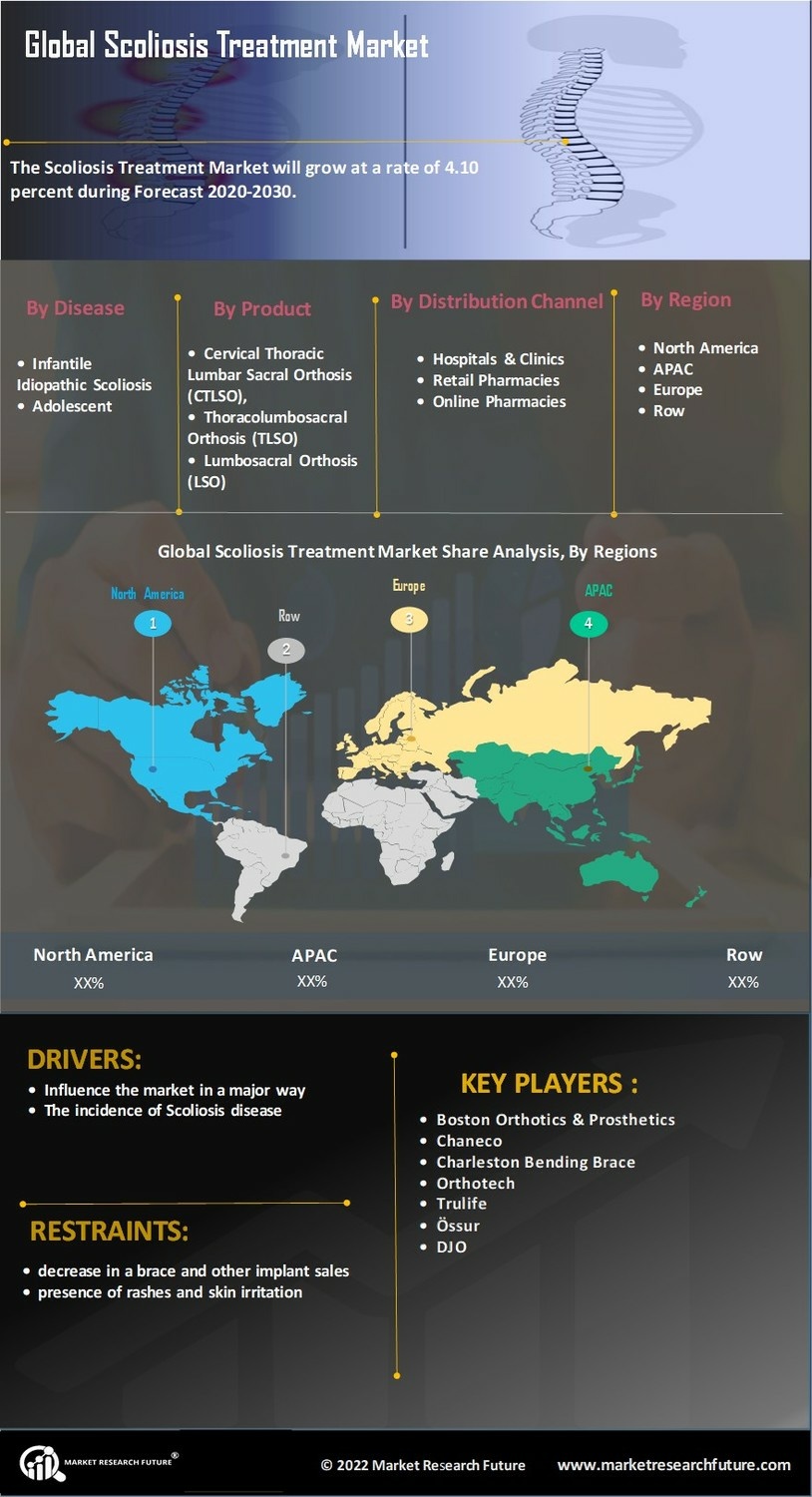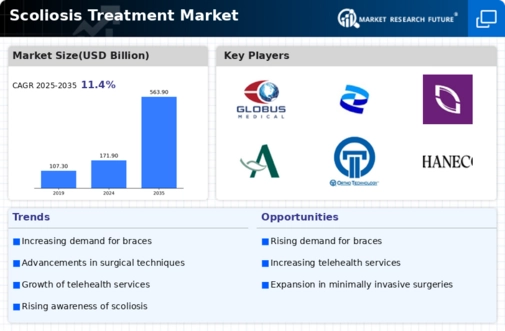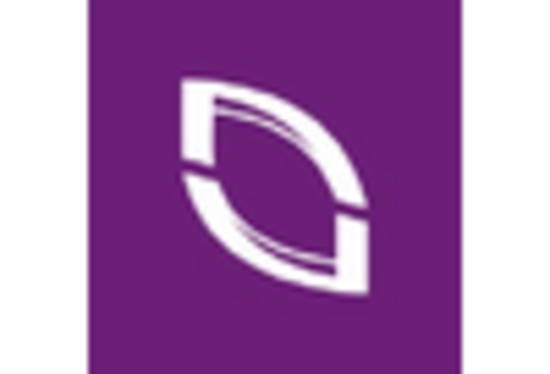Growing Awareness and Education
The increasing awareness surrounding scoliosis and its treatment options is a crucial factor propelling the Scoliosis Treatment Market. Educational initiatives aimed at both healthcare professionals and the general public have been instrumental in disseminating information about the condition. Campaigns that highlight the importance of early detection and intervention are likely to lead to more individuals seeking medical advice and treatment. Furthermore, the rise of online resources and support groups has facilitated knowledge sharing, empowering patients to make informed decisions regarding their care. This heightened awareness may translate into a greater willingness to explore various treatment modalities, including physical therapy and bracing, thereby expanding the market. As more individuals become educated about scoliosis, the demand for comprehensive treatment options is expected to grow.
Increasing Prevalence of Scoliosis
The rising incidence of scoliosis among adolescents and adults appears to be a primary driver for the Scoliosis Treatment Market. Recent estimates suggest that scoliosis affects approximately 2-3% of the population, with a notable increase in cases being diagnosed each year. This trend may be attributed to heightened awareness and improved diagnostic techniques, leading to earlier detection. As more individuals seek treatment, the demand for various therapeutic options, including bracing and surgical interventions, is likely to escalate. Consequently, healthcare providers are compelled to enhance their offerings, thereby expanding the Scoliosis Treatment Market. Furthermore, the growing emphasis on preventive care and early intervention strategies may contribute to a more proactive approach in managing scoliosis, ultimately influencing market dynamics.
Advancements in Surgical Techniques
Innovations in surgical procedures for scoliosis correction are significantly impacting the Scoliosis Treatment Market. Techniques such as minimally invasive surgery and robotic-assisted procedures have emerged, offering patients reduced recovery times and improved outcomes. Data indicates that the adoption of these advanced surgical methods has increased, with a reported rise in the number of surgeries performed annually. This shift not only enhances patient satisfaction but also encourages more individuals to consider surgical options, thereby driving market growth. Additionally, the development of new materials and technologies for spinal implants is likely to further refine surgical practices, making them safer and more effective. As a result, the Scoliosis Treatment Market is expected to witness a surge in demand for these innovative surgical solutions.
Rising Demand for Non-Invasive Treatment Options
The growing preference for non-invasive treatment options is shaping the Scoliosis Treatment Market. Patients and healthcare providers are increasingly recognizing the benefits of conservative management strategies, such as physical therapy and bracing, as effective alternatives to surgical intervention. Market data suggests that non-invasive treatments are gaining traction, particularly among younger patients who may wish to avoid surgery. This trend is likely influenced by a combination of factors, including the desire for less invasive approaches and the potential for fewer complications. As awareness of these options continues to rise, the demand for non-invasive treatments is expected to increase, prompting healthcare providers to expand their offerings. Consequently, the Scoliosis Treatment Market may experience a shift towards a more balanced approach that incorporates both surgical and non-surgical options.
Increased Investment in Healthcare Infrastructure
The ongoing investment in healthcare infrastructure is anticipated to bolster the Scoliosis Treatment Market. Governments and private entities are increasingly allocating resources to enhance medical facilities and improve access to specialized care. This trend is particularly evident in regions where scoliosis treatment options have been historically limited. Enhanced infrastructure not only facilitates the availability of advanced treatment modalities but also encourages the establishment of specialized clinics and centers dedicated to scoliosis management. As a result, patients are likely to experience improved access to care, which may lead to higher treatment rates. Moreover, the integration of multidisciplinary approaches in scoliosis management, supported by robust healthcare systems, could further enhance patient outcomes and satisfaction, thereby driving market growth.

















Leave a Comment